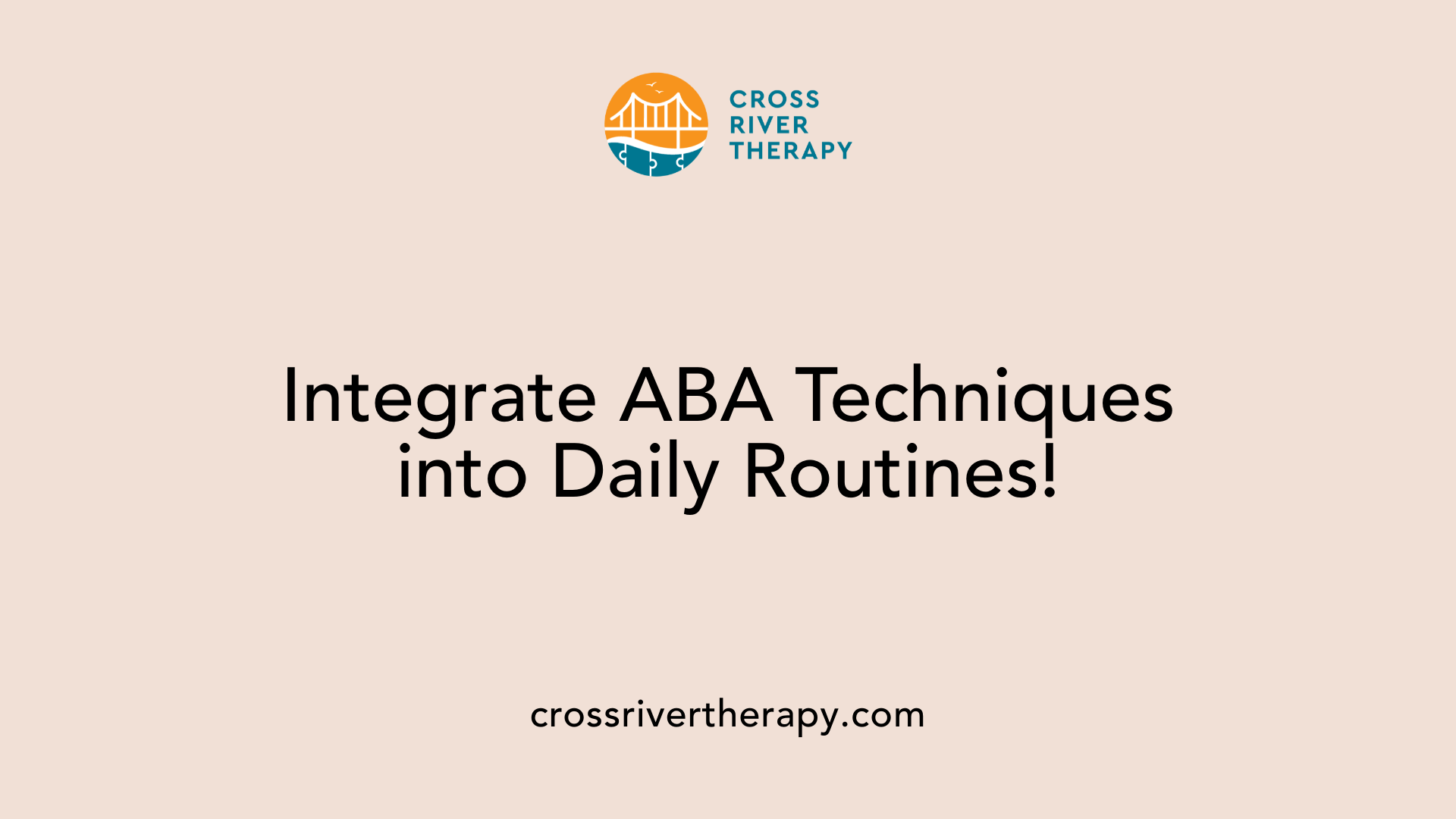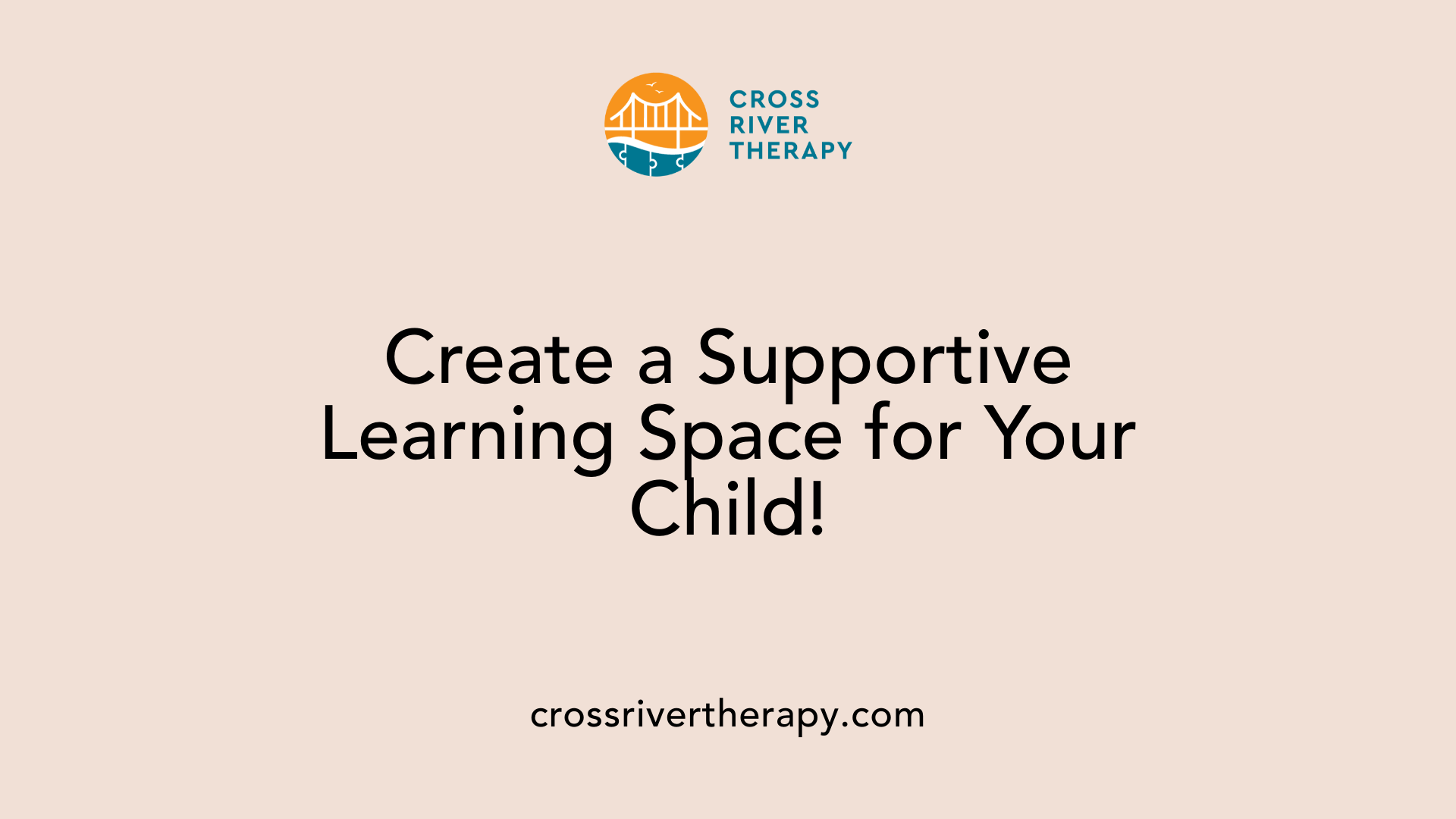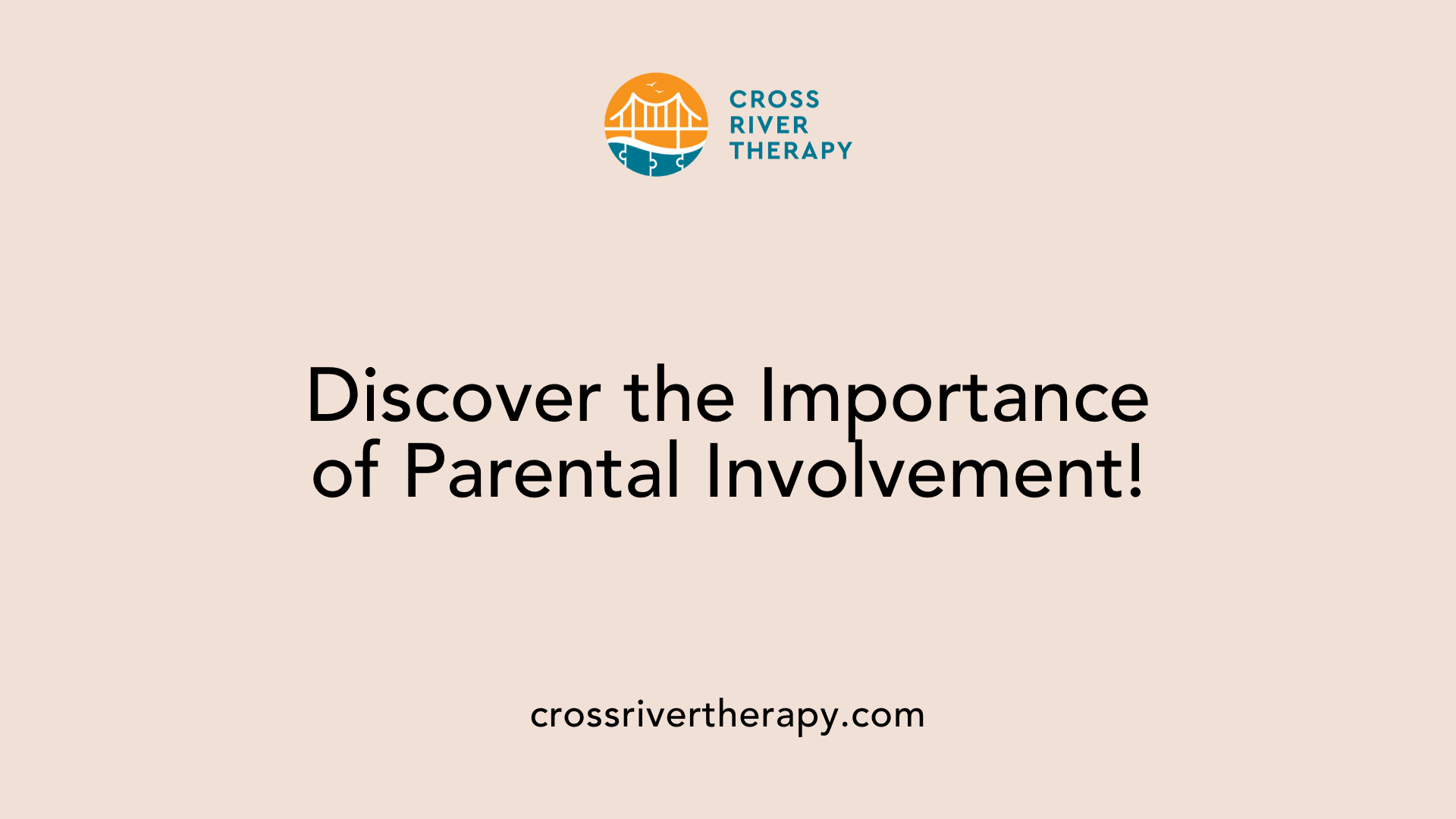ABA Techniques for Home Use
Effective Strategies for Implementing ABA at Home
Introduction to Home-Based ABA
Applied Behavior Analysis (ABA) therapy is widely acknowledged as a highly effective, evidence-based intervention for children with autism spectrum disorder (ASD). Its principles focus on modifying behavior and teaching new skills, utilizing a variety of techniques that parents can apply at home. By integrating these strategies into daily routines, parents can significantly enhance their child's learning and development. This article will explore how to implement ABA techniques in a home setting, aiming to provide parents with practical guidance and tips.
Understanding ABA Therapy and Its Home Implementation

What is ABA therapy and how can it be implemented at home?
Applied Behavior Analysis (ABA) therapy is an evidence-based intervention widely recognized as the gold standard for treating children with autism spectrum disorder (ASD). It focuses on improving specific behaviors such as communication, social skills, and learning, while also reducing challenging behaviors.
Parents can implement ABA therapy at home by using various techniques:
- Positive Reinforcement: Rewarding desired behaviors with praise or tangible rewards encourages children to repeat them.
- Shaping: Gradually guiding children towards a desired skill by reinforcing successive approximations encourages improvement.
- Prompting: Giving cues to indicate the desired response, which can then be faded as the child becomes more independent.
- Modeling: Demonstrating tasks or behaviors, such as brushing teeth or completing a homework assignment, helps children learn through observation.
Incorporating tools such as visual supports, structured play activities, and functional communication training can enhance learning and skill development for children with autism. A structured routine with clear expectations reduces anxiety and promotes compliance, making it easier for children to engage in their learning environments.
To maximize the effectiveness of ABA techniques, parental involvement is crucial. Active participation not only reinforces what is learned during therapy sessions but also strengthens the therapeutic relationship, ultimately leading to better behavioral outcomes for children with autism.
Applying ABA Techniques to Everyday Life

What are some examples of ABA techniques used in everyday life?
Incorporating ABA techniques into daily routines can significantly enhance a child's learning and behavioral outcomes. Here are some practical examples of how this can be achieved:
- Positive Reinforcement: By providing praise or rewards when a child completes tasks, parents can encourage repetition of desired behaviors. For instance, complimenting a child for putting away their toys fosters a habit of tidiness.
- Visual Supports: Using charts or visual schedules can help children understand routines and expectations. This can include simple morning routines illustrated with pictures, aiding comprehension and compliance.
- Modeling: Demonstrating tasks like brushing teeth or showing how to tie their shoes allows children to learn through observation. Engaging them through video modeling can enhance this process.
- Task Analysis: Breaking down complex tasks into smaller, manageable steps helps children learn and retain information better. For example, teaching how to prepare a snack by outlining each step—washing hands, selecting the food, and gathering utensils—can simplify learning.
- Matching Games: Activities like matching colors or shapes enhance cognitive skills and focus. Playing such games during downtime can make learning fun and engaging.
- Role-Playing: Practicing conversations or social scenarios encourages the development of communication skills and helps children navigate various social situations.
Benefits of incorporating ABA into natural settings
Utilizing ABA techniques in familiar environments can foster a supportive learning atmosphere. The benefits include:
- Real-Life Application: Skills learned during structured therapy can be seamlessly applied in everyday situations, enhancing generalization.
- Increased Engagement: Children often respond better in environments where they feel comfortable and secure, leading to improved learning outcomes.
- Family Involvement: When parents actively participate in educational activities, it strengthens family bonds and increases motivation for the child.
- Enhanced Skill Retention: Practicing skills in everyday contexts boosts retention and helps reinforce learning, paving the way for independence.
Core Concepts and Structure of ABA

What are the seven dimensions of ABA?
The seven dimensions of Applied Behavior Analysis (ABA) were established by Baer, Wolf, and Risley in 1968 to ensure the effectiveness and integrity of behavior analysis practices. These dimensions are:
- Applied: The interventions focus on socially significant behaviors that affect individuals' lives.
- Behavioral: The emphasis is on measuring observable behaviors rather than internal states or emotions.
- Analytic: A functional relationship between interventions and behavior change is established through careful analysis.
- Technological: Procedures are described clearly and concisely to allow for replication.
- Conceptually Systematic: Techniques are grounded in established principles of behavior analysis, promoting consistent application.
- Effective: Interventions are effective in producing meaningful changes in behavior.
- Generality: The behavior change occurs across different settings, people, or behaviors, promoting sustainability over time.
These dimensions act as a framework for designing and assessing ABA interventions, ensuring they are systematic and grounded in scientific principles.
Importance of a structured approach
A structured approach is vital when implementing ABA techniques in any setting, especially at home.
- Predictability: A consistent environment allows children to anticipate routines, reducing anxiety and enhancing learning.
- Skill Acquisition: Breaking down complex tasks into smaller, manageable steps makes learning more approachable.
- Data Collection: Monitoring progress through regular data collection helps in adjusting strategies based on the child's needs.
- Positive Engagement: Engaging children in familiar settings increases their motivation and capably helps them generalize skills across different situations.
By adhering to these structured elements, parents can effectively employ ABA principles to foster their children's development, thus reinforcing positive behavior changes that last beyond therapy sessions.
Building a Structured and Supportive Environment

Importance of a Structured Environment
A well-structured home environment is critical for children with autism. It provides consistency, which helps reduce anxiety and promotes positive behavior. Establishing a routine with fixed schedules for meals, playtime, and bedtime creates predictability. This predictability significantly contributes to the child's focus and learning outcomes in various activities.
Creating a Conducive Learning Space at Home
To maximize the effectiveness of ABA techniques, create a space free from distractions. This area should include necessary learning materials and be structured to minimize sensory overload. Engaging visual supports, such as charts or schedules, can further help children understand tasks and expectations. Regularly monitoring progress by collecting data on behavior helps refine strategies, making the home a nurturing learning environment conducive to skill development.
Key Techniques: Positive Reinforcement and Beyond
How does positive reinforcement drive behavior modification?
Positive reinforcement is a cornerstone of ABA therapy, crucial for encouraging desired behaviors in children with autism. By offering a reward—whether it's praise, tokens, or treats—immediately after a desired behavior, parents can significantly increase the likelihood of that behavior reoccurring. This method makes the child more likely to repeat the behavior as they associate it with a positive outcome.
Moreover, positive reinforcement fosters confidence and motivation in children, encouraging them to engage more actively during learning activities. For instance, rewarding a child for completing their chores not only reinforces that behavior but also builds their self-esteem.
What are additional ABA techniques for behavior change?
In addition to positive reinforcement, several other effective ABA techniques can be implemented at home:
- Modeling: Demonstrating desired behaviors allows children to learn through observation, making it easier for them to replicate those behaviors.
- Prompting and Fading: This involves providing cues to the child to encourage specific actions while gradually reducing assistance as independence grows.
- Token Economy: Using a system where children earn tokens for good behavior that can later be exchanged for rewards increases motivation and engagement.
- Task Analysis: Breaking down complex tasks into smaller, manageable steps helps children learn effectively, enabling them to master each component before tackling the whole task.
- Operant Extinction: Temporarily removing rewards for undesirable behaviors can effectively decrease their frequency. This technique is useful for behaviors like tantrums, allowing for more compliance over time.
Parental Role in Enhancing ABA Outcomes

The significance of parent involvement
Parent participation plays a crucial role in the effectiveness of ABA therapy for children with autism. Involving parents allows skills learned in clinical settings to be consistently reinforced at home. This immersion helps children generalize these skills across various environments, enhancing their learning experience. When parents actively engage in their child's therapy, they contribute to their overall development and emotional well-being, fostering a stronger therapeutic relationship.
Training and collaboration with professionals
To maximize ABA outcomes, parents should pursue training opportunities offered by Board Certified Behavior Analysts (BCBAs). These training sessions equip parents with the necessary strategies to implement ABA techniques effectively. Collaboration with professionals ensures that parents fully understand how to manage their child's behavior, set realistic goals, and track progress, leading to more substantial improvements in the child's skills. Regular communication between parents and therapists is vital for making adjustments to interventions as needed.
Overcoming Challenges in Home-Based ABA
Addressing Common Challenges
Implementing ABA therapy at home can present various challenges, such as consistency in applying techniques and the child's resistance to new routines. Establishing a structured environment with clear rules can help in setting expectations and minimizing distractions. Engaging the child in enjoyable activities that incorporate learning can also make therapy feel less like a chore. Encouragement through positive reinforcement, like verbal praise or rewards, can motivate children to participate actively.
Continuous Adaptation and Tracking Progress
Adapting strategies based on your child's evolving needs is crucial. Parents should track behavioral changes using simple methods like frequency recording or checklists to monitor progress. Regular communication with a BCBA or RBT can provide additional insights and adjustments to interventions. Celebrating small successes reinforces motivation and helps maintain a positive atmosphere for learning at home.
Conclusion: Unleashing Potential with Home-Based ABA
Embracing ABA techniques at home can empower parents to support their child's growth effectively. By understanding and applying these strategies, parents can create a nurturing environment that fosters learning and behavioral improvements. While challenges certainly exist, consistent practice and collaboration with professionals can make home-based ABA a transformative experience for children with autism, leading to meaningful progress and enhanced quality of life.
References
- How to Implement Effective ABA Therapy Strategies at Home
- At-Home ABA Therapy Techniques for Parents | Heartlinks
- ABA Therapy Strategies to Use at Home - Kids Spot
- How Parents Can Practice ABA Therapy at Home: A Practical Guide
- ABA Therapy Activities To Do At Home - Autism Parenting Magazine
- How to Incorporate ABA Therapy at Home
- How to Incorporate ABA Therapy at Home - Surpass Behavioral Health



